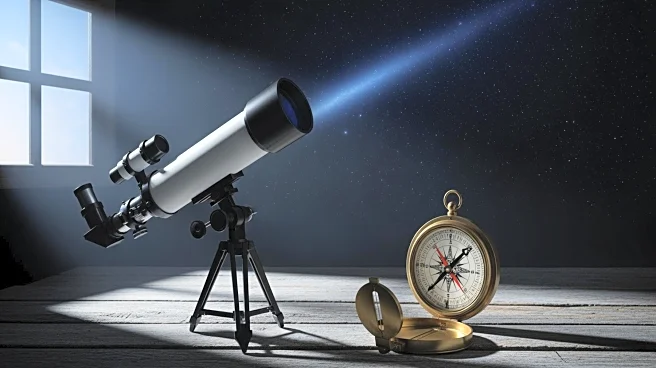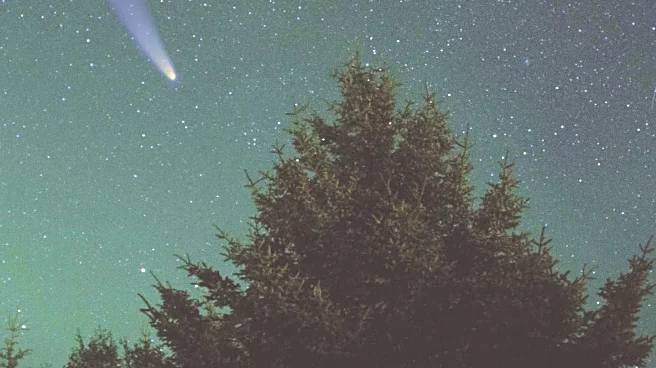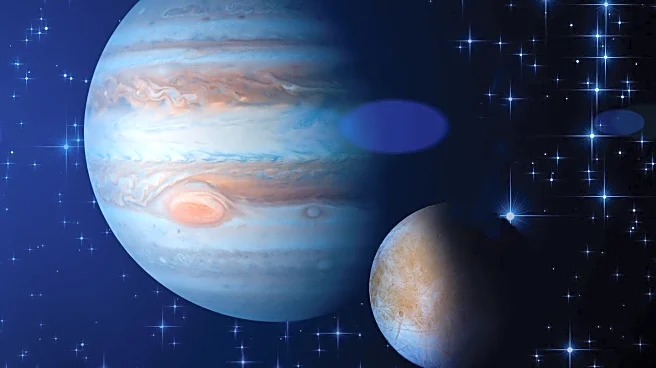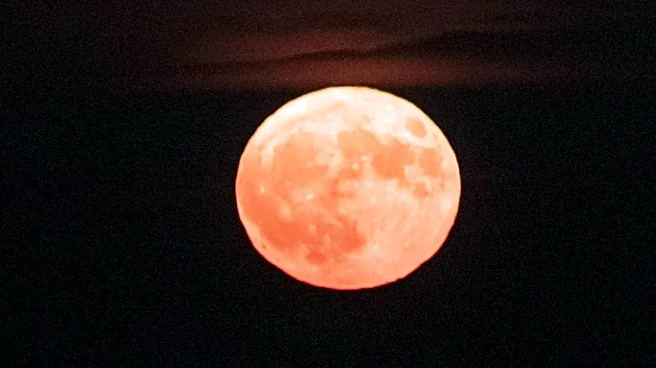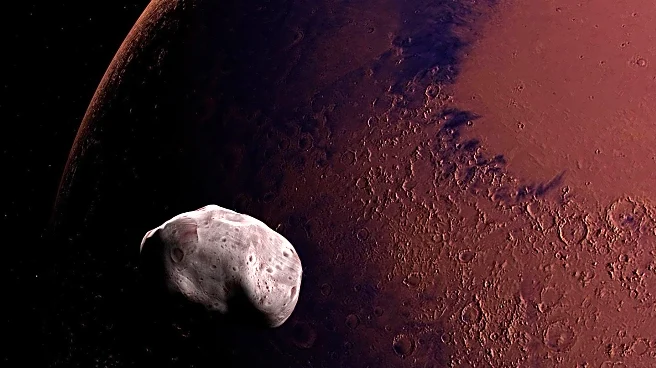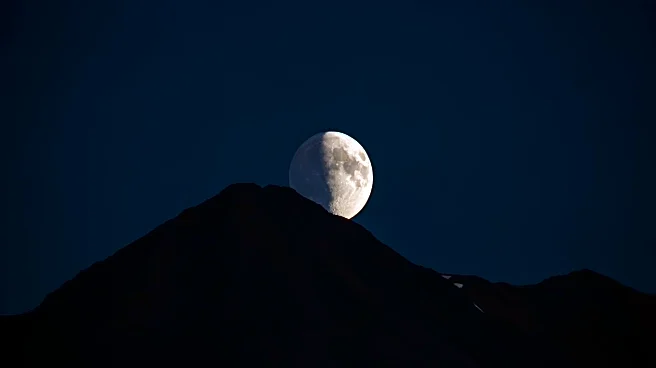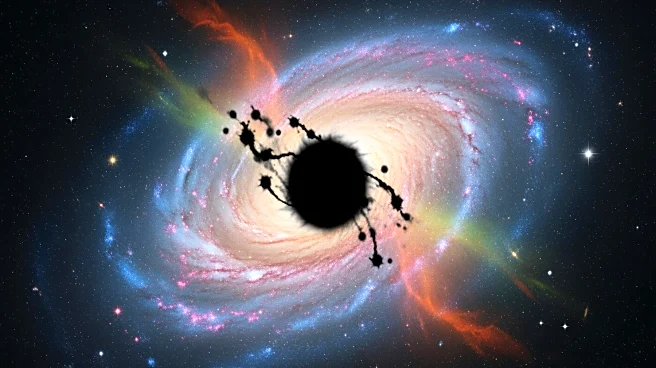What's Happening?
On November 8, Mercury ceased its easterly motion at 6 P.M. EST, initiating a retrograde movement relative to the background stars. This astronomical event occurs as Mercury moves through the constellation
Scorpius, becoming observable shortly after sunset near Antares. The visibility of Mercury requires optical aid due to its proximity to the horizon. Mars is also visible near Mercury, displaying similar brightness to Antares, although its observability is declining as it approaches solar conjunction in early January. Additionally, the gibbous Moon will rise concurrently with Jupiter around 9 P.M. local time, remaining visible through the night and into the following morning.
Why It's Important?
The retrograde motion of Mercury is significant for astronomers and sky watchers as it alters the planet's position relative to the stars, affecting observation schedules and visibility. This event provides an opportunity for enthusiasts to observe Mercury alongside Mars and Antares, although optical aid is necessary due to their low position in the sky. The concurrent visibility of the Moon and Jupiter offers additional observational targets, enhancing the experience for both amateur and professional astronomers. The changing positions of these celestial bodies can impact astronomical research and public interest in sky watching.
What's Next?
As Mercury continues its retrograde motion, astronomers and sky watchers will need to adjust their observation plans to accommodate its changing position. Mars will become increasingly difficult to observe as it approaches solar conjunction in early January, marking one of the last opportunities to view it alongside Mercury. The visibility of the Moon and Jupiter throughout the night provides ongoing opportunities for observation, encouraging continued interest in astronomical events. Future celestial alignments and movements will continue to shape observation schedules and public engagement with astronomy.
Beyond the Headlines
The retrograde motion of Mercury, while a common astronomical occurrence, often sparks interest and curiosity among the public due to its perceived effects on astrology and cultural beliefs. This event highlights the intersection of science and cultural interpretations, offering a platform for educational outreach and public engagement with astronomy. The visibility of multiple celestial bodies during this period can inspire discussions on the mechanics of planetary motion and the broader implications for understanding the universe.
